Cruise ships have always been a symbol of adventure, luxury, and discovery. From the grandeur of historical ocean liners to today’s floating cities, these vessels captivate our imagination.
Whether you’re a maritime enthusiast, a seasoned cruiser, or someone pondering their first voyage, understanding the length and size of these ships can offer a unique perspective on your journey.

How Long is a Cruise Ship? The Quick Answer
At its core, the length of a cruise ship can vary greatly based on its purpose, design, and target audience.
In general, small cruise ships might measure anywhere from 150 to 450 feet. Medium-sized ones often fall between 450 to 1,000 feet. Large cruise ships can span from 1,000 to 1,200 feet, while the mega cruise ships, the true giants of the seas, can exceed 1,200 feet in length.
Remember, these figures are general estimates, and actual ship lengths can differ. Whether you’re aboard a cozy vessel or a sprawling ship, each offers its own unique maritime experience.
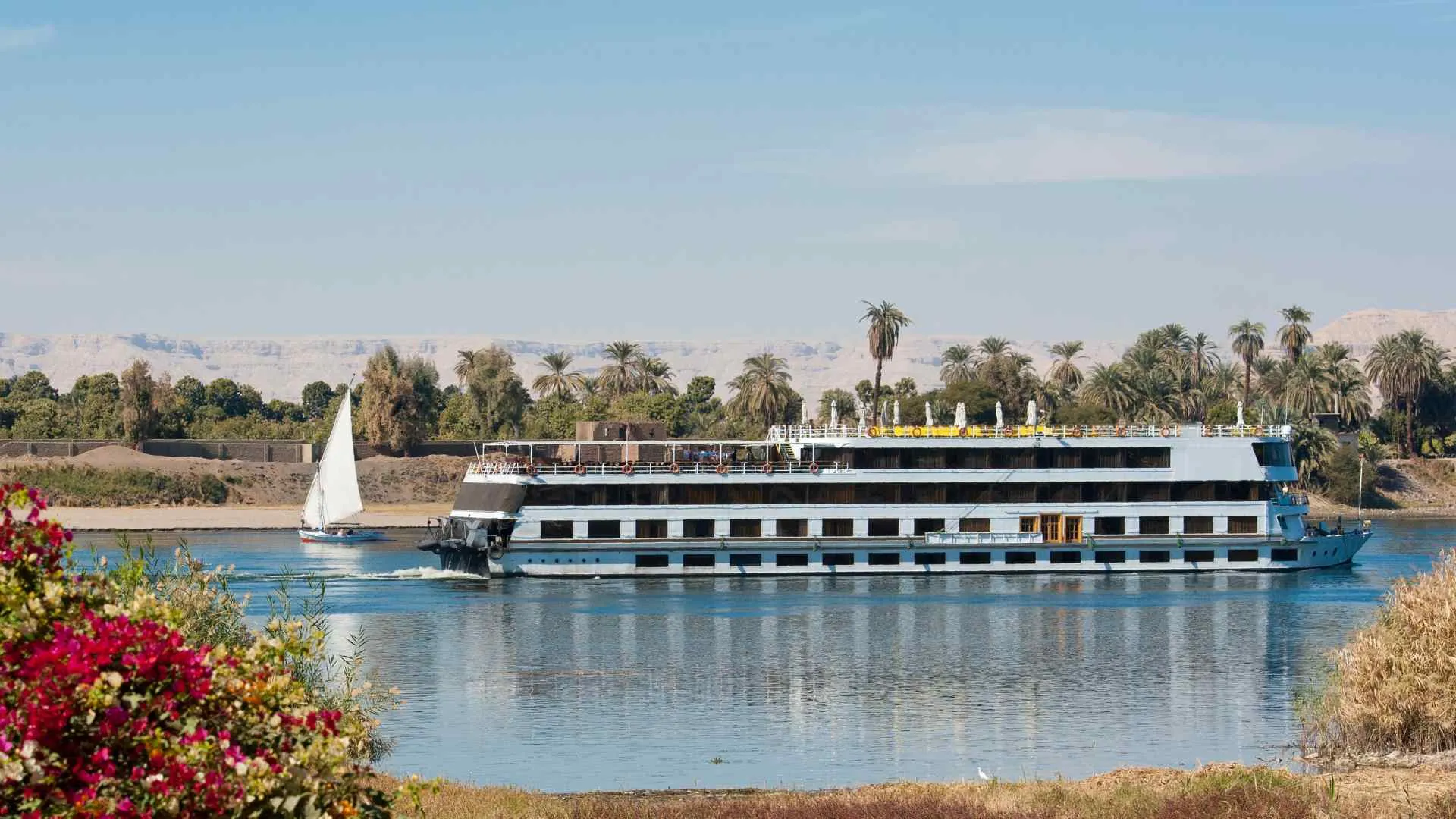
A Brief History of Cruise Ship Sizes
Cruise ships have come a long way from their humble beginnings. Their evolution in size isn’t just a testament to human engineering, but also a reflection of our ever-changing tastes and desires in travel.
Early Days: From Ocean Liners to Cruise Ships
In the early 20th century, ocean liners ruled the waves. These were massive ships designed primarily for transporting passengers across vast oceans, with the famous Titanic and Queen Mary as notable examples.
While these vessels were indeed grand, their length wasn’t so much about luxury as it was about efficiency and stability in rough seas. However, as aviation took over transatlantic travel, the need for these gigantic ocean liners waned.
The transition from ocean liners to dedicated cruise ships marked a significant shift. These new vessels were no longer solely about getting from Point A to Point B.
Instead, the journey itself became the destination. The question of “how long is a cruise ship?” started to gain relevance, not just for the sake of stability but also for the experiences and amenities they could offer onboard.

Evolution of Size: Luxury, Amenities, and More
As cruising became a favored form of vacationing, ships began to grow in length and grandeur. The 1980s and 1990s saw a boom in the industry, leading to bigger and more opulent ships.
Suddenly, the phrase “how long is a cruise ship?” wasn’t just a question of dimensions, but also a reflection of status. A longer ship often meant more facilities, from expansive pools to extravagant theaters.
The Role of Technology
One can’t discuss the evolution of cruise ship sizes without touching on technology. Advanced materials, better engineering practices, and innovative design solutions enabled these vessels to grow without compromising on safety.
In fact, many of the world’s longest cruise ships today owe their impressive lengths to breakthroughs in maritime technology.
The Changing Demands of Cruisers
Over time, as travelers became more discerning, cruise lines started tailoring their ships to cater to specific audiences. Some travelers craved intimate, bespoke experiences on smaller vessels, while others sought the buzz of a bustling mega ship.
The variations in size served different niches, each answering the question of “how long is a cruise ship?” in its own unique way.

Why Do Cruise Ships Vary in Size?
The vast oceans are dotted with ships of various sizes, each tailored to a unique purpose and experience.
Ever stood at a port and wondered why one cruise ship dwarfs another? Let’s dive into the reasons behind the diverse lengths of these vessels.
Purpose and Route: From the Caribbean to the Antarctic
Not all seas and oceans are created equal. A cruise through the icy waters of Antarctica requires a different vessel design than one meandering through the warm Caribbean.
Some routes demand smaller, nimble ships that can navigate tight passages or shallow waters. For instance, ships sailing through the Panama Canal or docking at quaint European ports might need to be more compact in size.
Brand and Target Audience: Luxury Liners vs. Family Cruises
The brand ethos and the target demographic play a pivotal role in determining ship size. Luxury liners, often catering to an exclusive clientele, might opt for smaller sizes to provide a more intimate, personalized experience.
On the other hand, family-focused cruises prioritize a plethora of activities, requiring larger ships with vast entertainment areas, multiple dining options, and expansive pool decks.
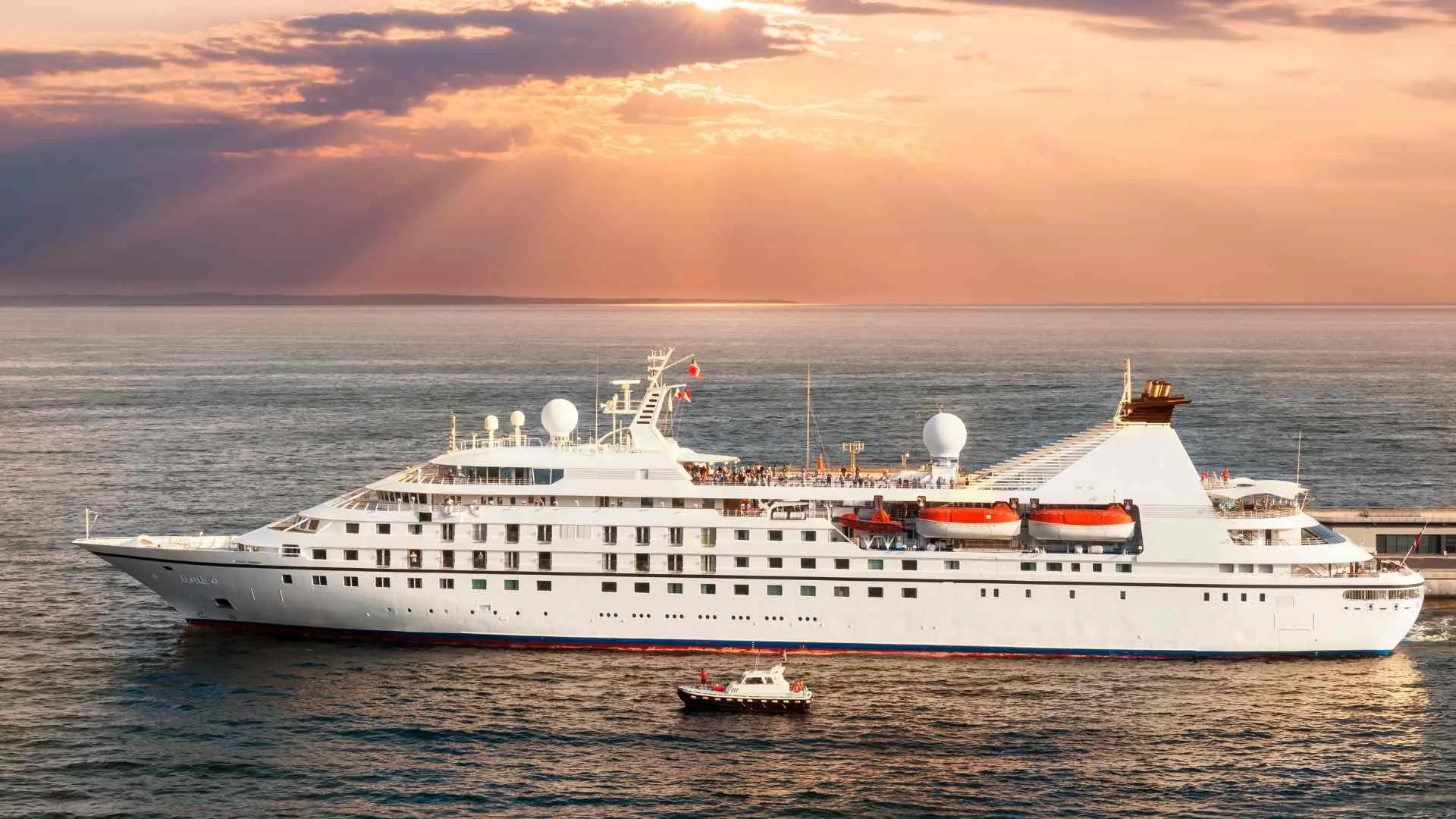
Port Restrictions and Environmental Considerations
The infrastructure of cruise ports can significantly influence ship size. Not every port can accommodate the gargantuan mega-ships. Older ports, especially in historic cities, might have depth or berth length restrictions.
Additionally, environmental considerations play a role. In ecologically sensitive areas, smaller ships with lesser drafts are preferred to minimize environmental impact.
Building Costs and Profitability
It’s also a matter of economics. Building a mega cruise ship requires a colossal investment.
Cruise companies weigh the potential returns, considering factors like fuel efficiency, passenger capacity, and operational costs. Sometimes, it’s more profitable to operate several medium-sized ships than one gigantic vessel.
The Quest for Innovation and Records
Lastly, there’s the sheer human desire to innovate and break records. Some cruise lines construct massive ships as a testament to human engineering, aiming to offer the grandest, most feature-packed experience on the seas, answering the question, “How long is a cruise ship?” with a sense of pride and grandeur.
Understanding the factors influencing cruise ship sizes offers a clearer picture of the maritime world, where every vessel is a result of careful planning, market research, and design genius.
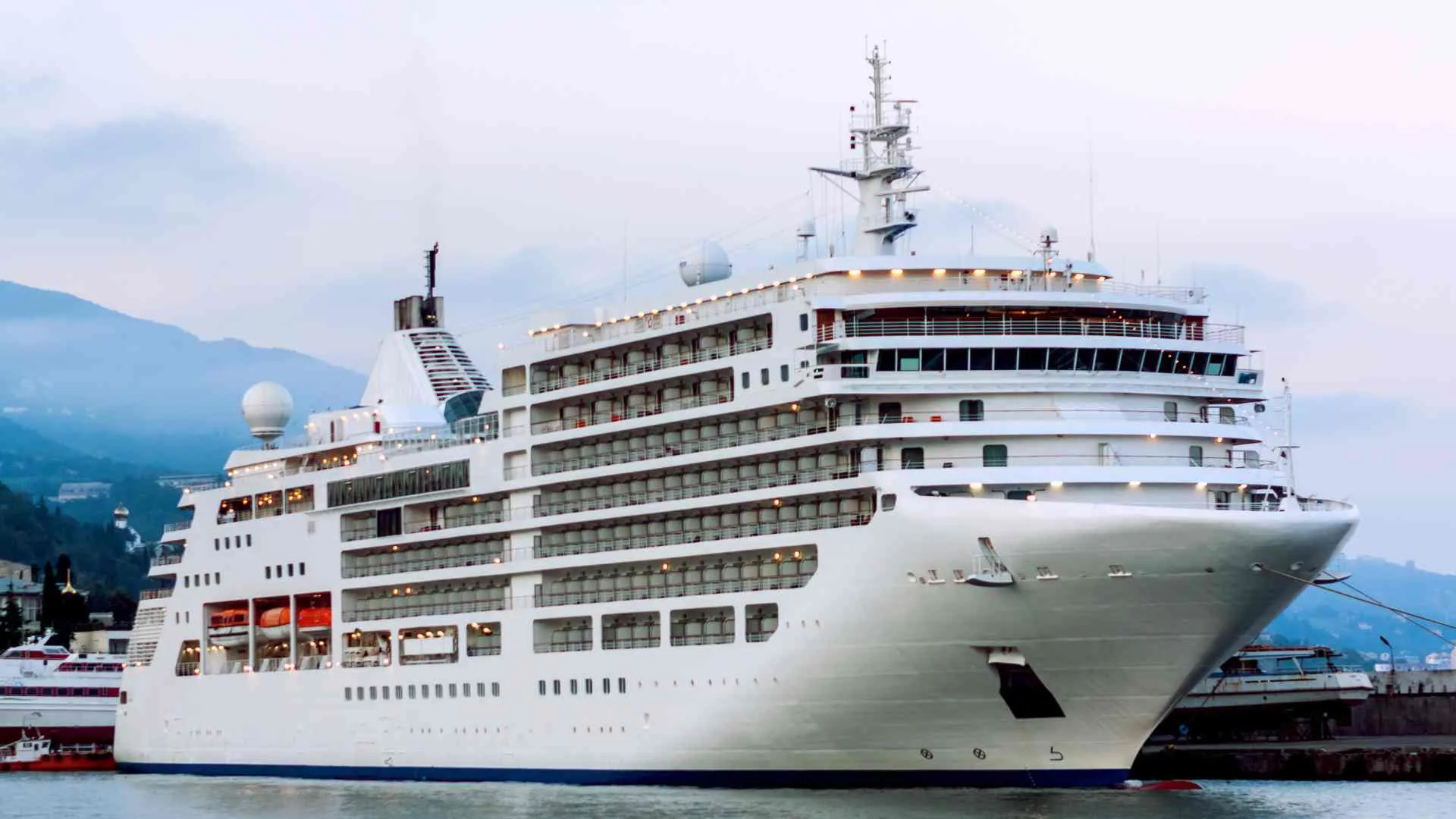
Breaking Down the Sizes of Cruise Ships
Cruise ships, with their varying lengths, cater to different travel desires. From intimate yachts to city-like behemoths, there’s a vessel for every type of cruiser.
Let’s explore the categories based on length and what each segment offers.
Small Cruise Ships: The Intimate Voyagers
Typical Size Range: 150 to 450 feet
These vessels offer a cozier, more personal travel experience. Their compact size allows them to venture into lesser-explored, remote ports that larger ships can’t access.
Advantages:
- Intimacy: Fewer passengers, leading to more personalized service.
- Remote Access: Sail to untouched destinations, from secluded beaches to charming small towns.
- Specialized Cruises: Often theme-based, catering to niche interests like wildlife, history, or wine.
Examples: Adventure yachts, boutique cruise liners, and riverboats.
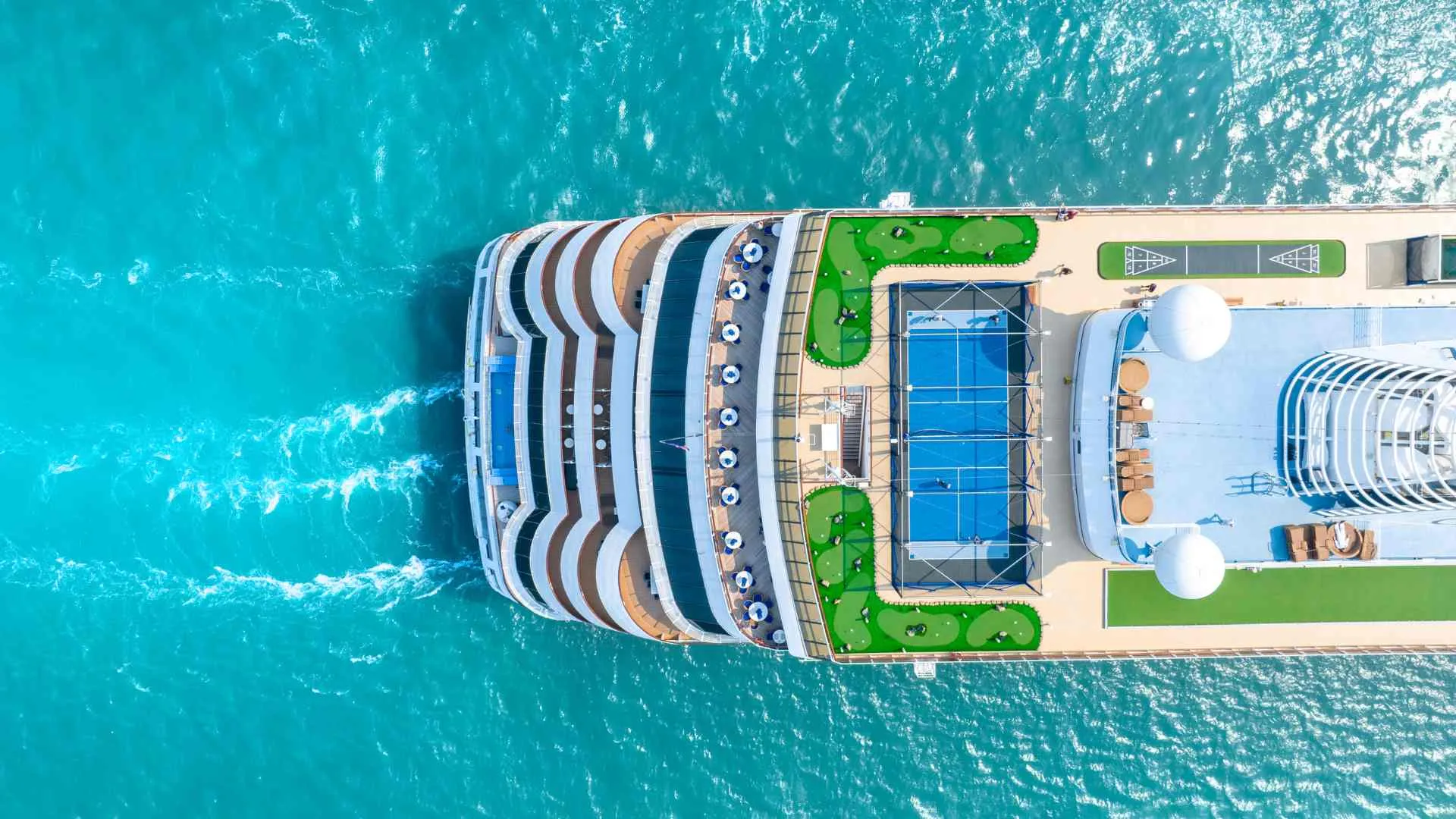
Medium Cruise Ships: The Perfect Blend
Typical Size Range: 450 to 1,000 feet
Striking a balance between size and intimacy, these ships pack a good mix of amenities without overwhelming guests.
Advantages:
- Diverse Amenities: A wider range of dining, entertainment, and accommodation options than smaller vessels.
- Community Feel: Big enough for variety, yet small enough to foster a sense of community.
- Port Flexibility: Can dock at major ports while still accessing some smaller destinations.
Examples: Many of the ships from premium cruise lines fall into this category.
Large Cruise Ships: Floating Resorts
Typical Size Range: 1,000 to 1,200 feet
When people ask, “How long is a cruise ship?” they often picture these giants. They are floating resorts, offering a vast array of experiences.
Advantages:
- Endless Options: Multiple restaurants, theaters, pools, and recreational areas.
- Broad Audience Appeal: From families to couples, there’s something for everyone.
- Stability: Their size often translates to smoother sailing, especially in rougher seas.
Examples: Many ships from popular cruise lines that frequent major tourist routes.
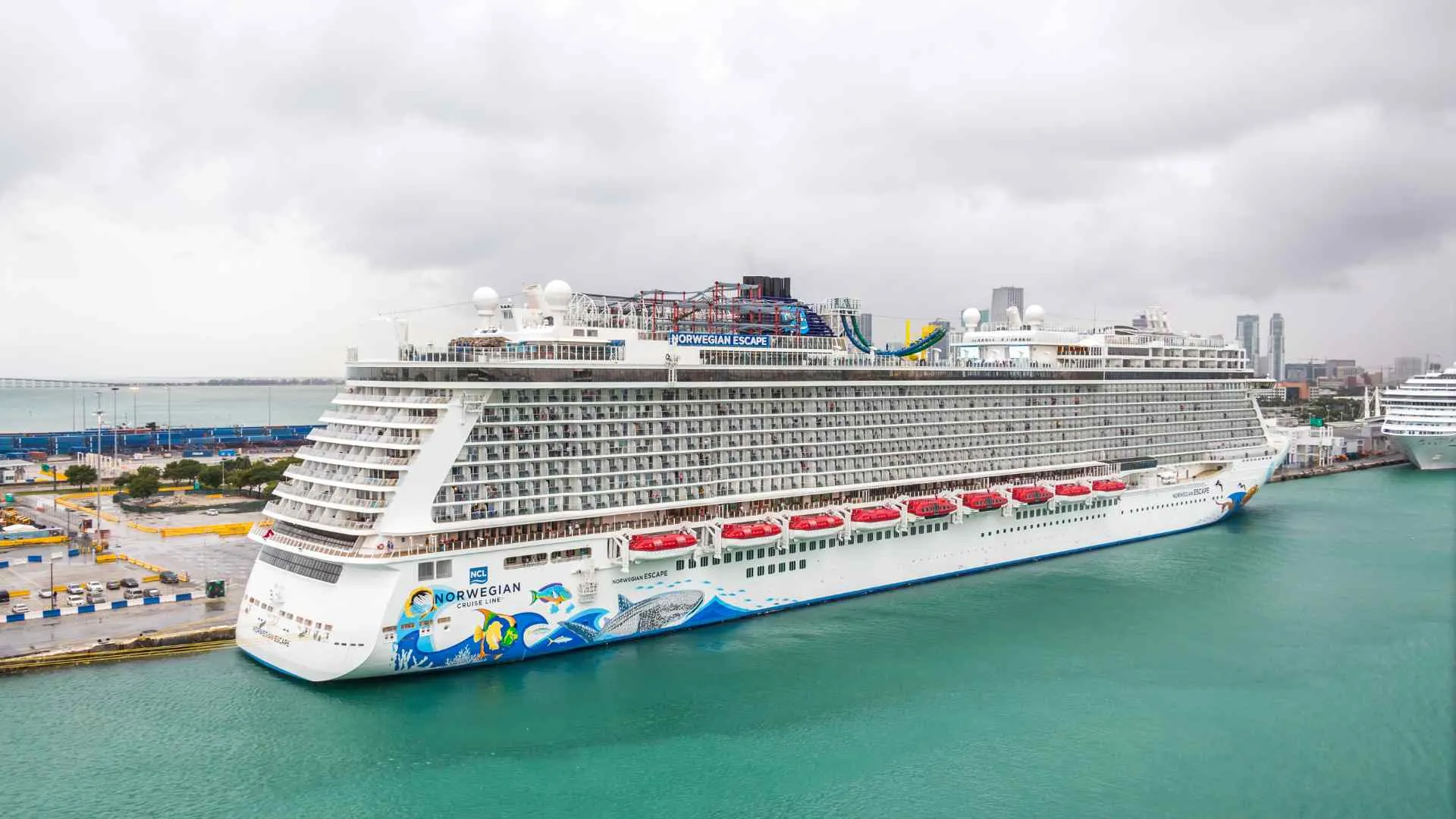
Mega Cruise Ships: Cities on the Sea
Typical Size Range: Over 1,200 feet
The crown jewels of the cruising world, these vessels are marvels of engineering and luxury.
Advantages:
- Ultimate Luxury: From exclusive suites to high-end shopping malls, they redefine opulence.
- Innovative Features: Think robotic bartenders, skydiving simulators, and multi-story waterslides.
- Vibrant Atmosphere: With so many passengers and activities, there’s a bustling, city-like feel.
Examples: Flagship vessels of leading global cruise lines, setting records and making headlines.
The question, “How long is a cruise ship?” isn’t just about feet or meters. It’s about the experiences crafted within those lengths, the memories made, and the worlds discovered.
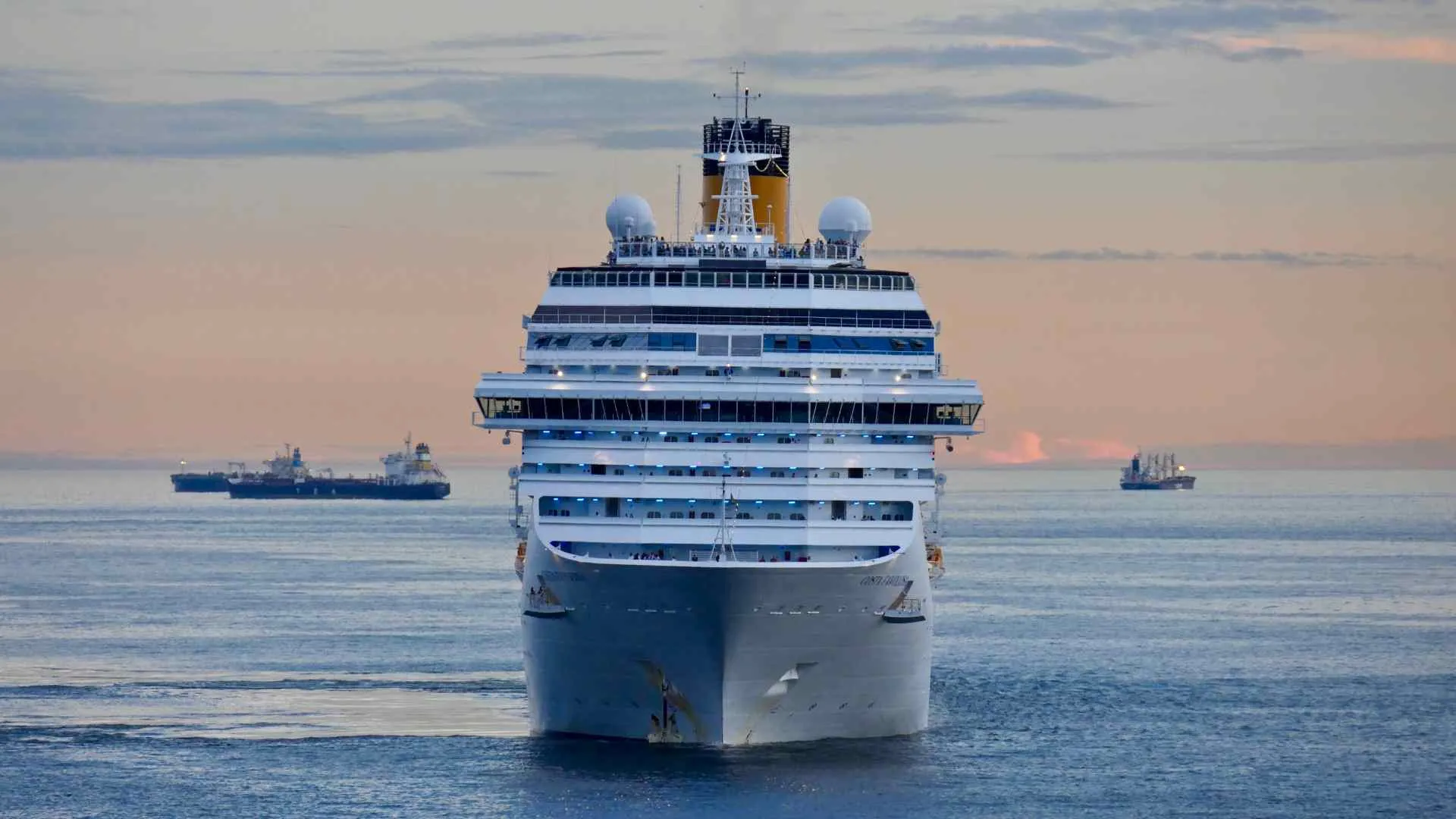
The Benefits and Drawbacks of Bigger Ships
Sailing on a mammoth cruise ship can be an exhilarating experience, much like exploring a small floating city. These ships, with their extensive range of facilities and attractions, have their distinct set of pros and cons.
Let’s delve into the advantages and potential downsides of choosing these sea giants for your next voyage.
Advantages of Bigger Ships:
1. Enhanced Stability and Smoother Sailing
The sheer size and weight of larger cruise ships often lead to a more stable voyage, especially in turbulent waters. Those prone to seasickness might find these ships more comfortable.
2. Diverse Dining and Entertainment Options
From gourmet restaurants helmed by celebrity chefs to Broadway-style shows, mega cruise ships offer a cornucopia of dining and entertainment choices.
3. Wide Range of Accommodations
Travelers can choose from a plethora of room types, from budget-friendly cabins to luxurious penthouse suites, catering to varied preferences and budgets.
4. Endless Activities
Bigger ships come equipped with a range of amenities like water parks, climbing walls, virtual reality zones, and even ice-skating rinks. There’s never a dull moment!
5. Economies of Scale
These ships often offer competitive prices due to their high passenger capacity, making luxury more accessible.
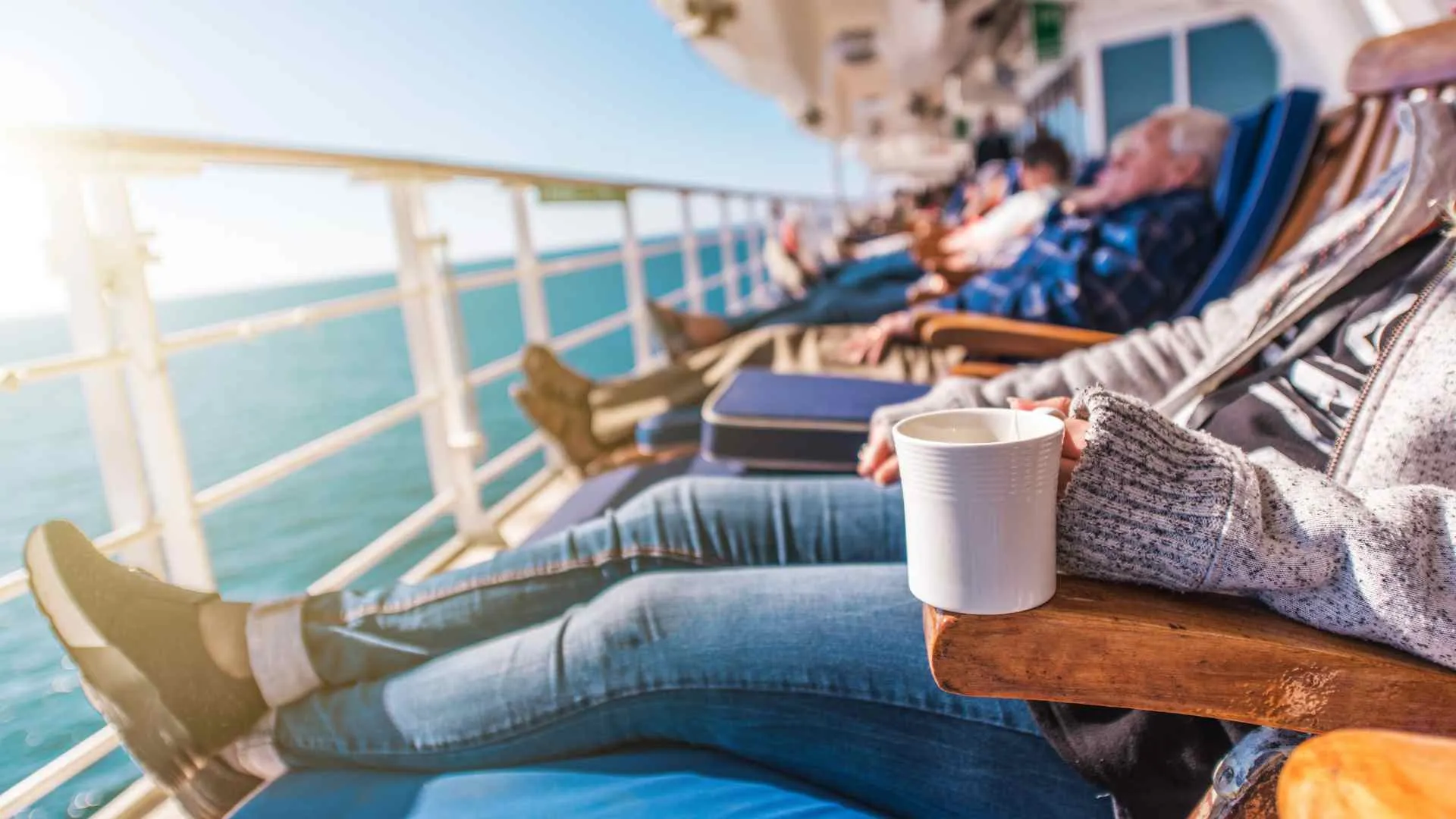
Drawbacks of Bigger Ships:
1. Potential for Crowds
With thousands of passengers onboard, popular areas can become crowded, leading to long wait times and reduced personal space.
2. Impersonal Experience
The vastness can sometimes make the experience feel less personal, with less interaction between passengers and crew.
3. Limited Port Access
Due to their size, these ships can’t dock at smaller ports, often requiring passengers to be ferried to shore, which can be time-consuming.
4. Environmental Concerns
Bigger ships can have a larger carbon footprint and produce more waste, raising environmental concerns.
5. Overwhelming Choices
With so much on offer, it can be challenging for passengers to decide how to spend their time, potentially leading to FOMO (Fear of Missing Out).
When pondering “How long is a cruise ship?” and choosing between the various sizes, it’s essential to weigh these pros and cons. Bigger might be better for some, but it’s crucial to align the ship’s offerings with your vacation priorities.
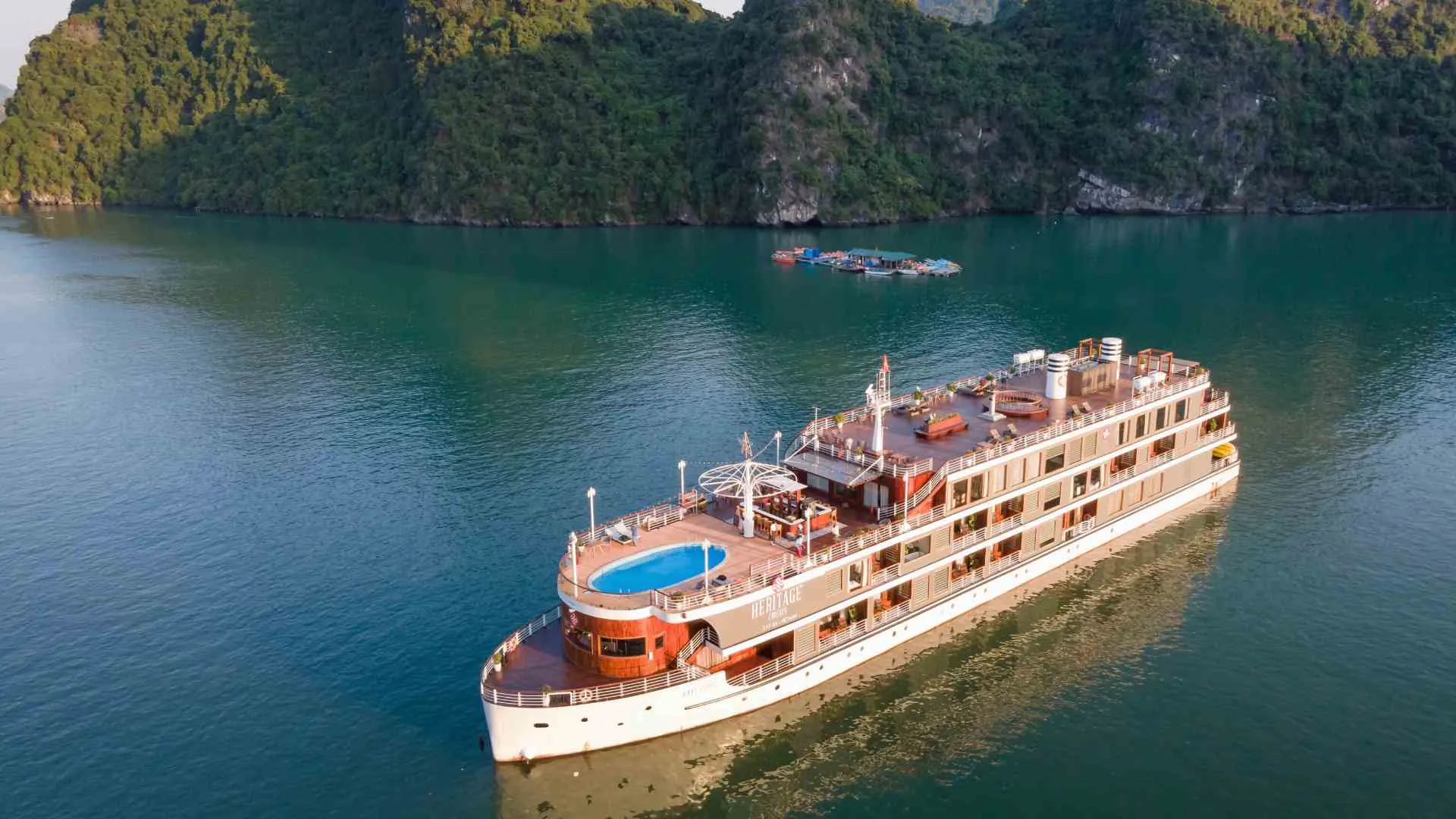
The Allure and Limitations of Smaller Cruise Ships
Venturing on a smaller cruise ship often feels like embarking on a private journey, where the world seems more intimate, and the experiences more personal.
These vessels, although lacking the grandeur of their larger counterparts, have their own set of unique benefits and potential downsides. Let’s explore the advantages and limitations of these more compact sea chariots.
Advantages of Smaller Ships:
1. Personalized Service
With fewer passengers onboard, crew members can offer a more personalized and attentive service, catering to individual needs and preferences.
2. Access to Exotic and Remote Ports
Their compact size allows these ships to dock or anchor at smaller, off-the-beaten-path ports, opening doors to unique destinations larger ships can’t access.
3. Intimate Atmosphere
Smaller ships often foster a sense of community. It’s easier to meet fellow travelers, share experiences, and forge lasting friendships.
4. Faster Embarkation and Disembarkation
With fewer passengers, the processes of getting on and off the ship are typically quicker and more seamless.
5. Less Commercial
You’re less likely to find bustling shopping centers or crowded casinos. Instead, the focus might be on local cultural experiences, onboard lectures, or tailored excursions.
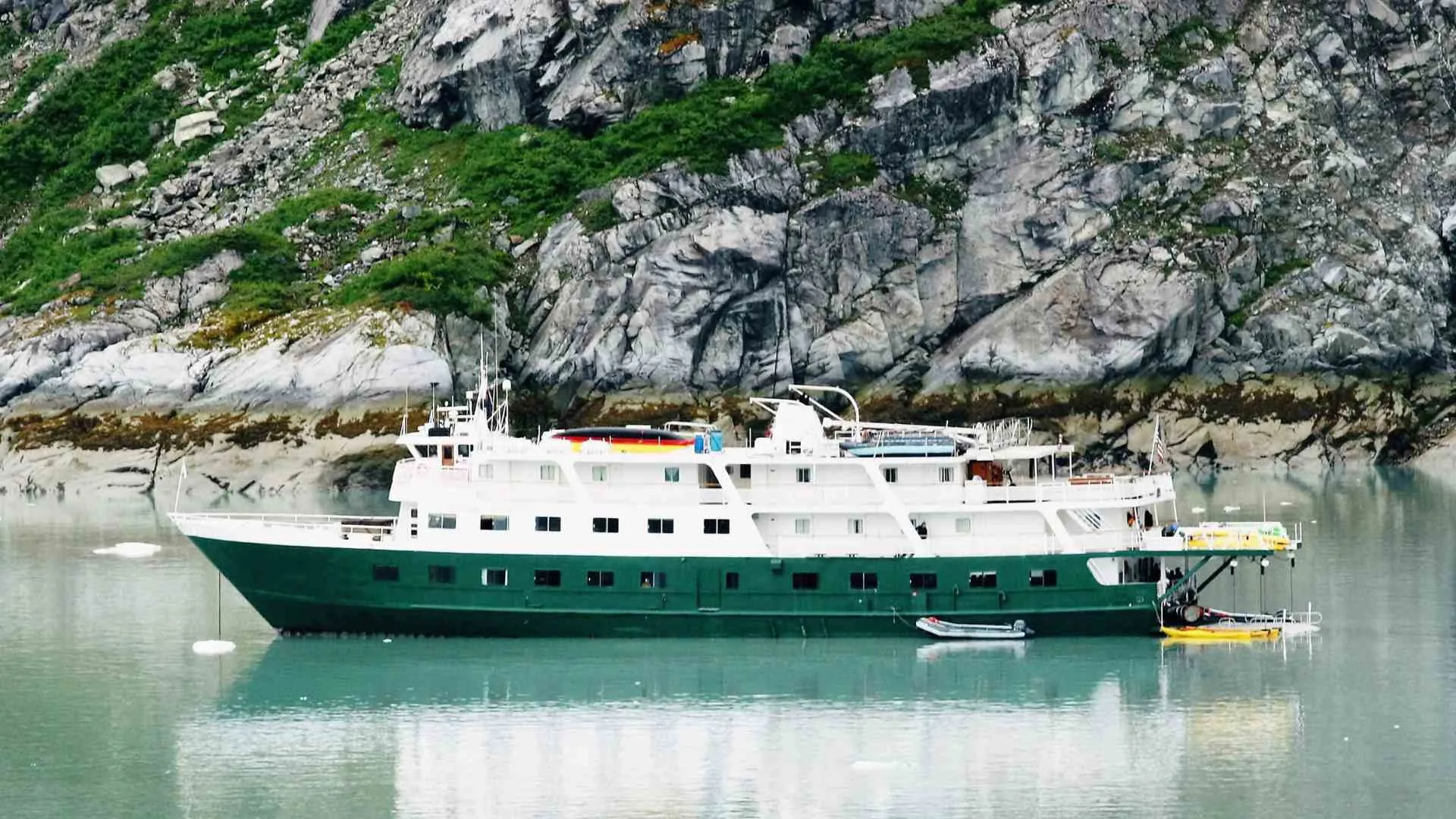
Drawbacks of Smaller Ships:
1. Limited Amenities
While they offer a curated experience, smaller ships might not have the vast array of entertainment or dining options available on larger vessels.
2. Potentially Rougher Sailing
Being lighter and smaller, these ships might feel the ocean’s movements more, which could be a concern for those prone to seasickness.
3. Higher Costs
Often, smaller ships, especially luxury or expedition ones, come with a higher price tag due to the specialized experiences and increased staff-to-guest ratios.
4. Lesser Known Brands
Many smaller ships belong to niche or boutique cruise lines. While this isn’t necessarily a con, those used to mainstream brands might be hesitant to try something unfamiliar.
5. Limited Onboard Activities
If you’re someone who thrives on constant entertainment or numerous activity options, a smaller ship might feel restrictive.
Answering the question, “How long is a cruise ship?” isn’t just about understanding dimensions. It’s about recognizing the unique flavors and experiences that each size brings to the table.
Small ships, with their distinct charm and limitations, cater to a discerning audience seeking something different from the conventional cruising norm.
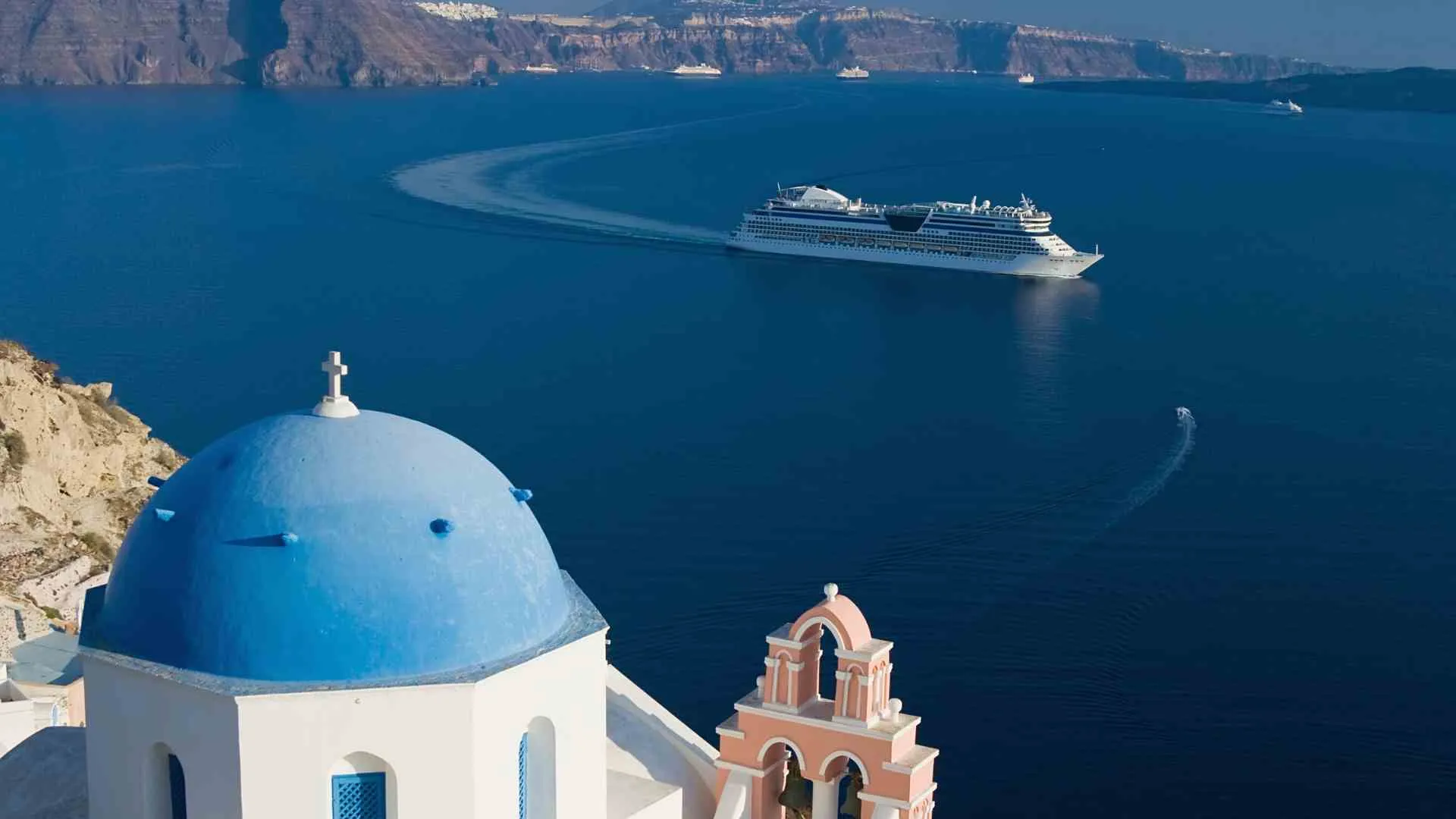
Beyond Length: How a Ship’s Length Correlates with Other Dimensions
When one asks, “How long is a cruise ship?”, it’s easy to focus solely on its linear measurement from bow to stern. However, a ship’s length is just one aspect of its overall dimensions.
The interplay between length, width, height, and depth offers insights into a vessel’s design, stability, capacity, and the experiences it promises. Let’s dissect how length correlates with these other crucial dimensions.
1. Beam (Width)
The beam of a ship refers to its width at its widest point. Generally, as ships increase in length, they also tend to widen, but not always in a linear fashion.
Why it matters:
- Stability: A wider beam can offer better stability, especially in rough seas.
- Capacity: A broader ship can accommodate more cabins, public spaces, and amenities side by side.
- Maneuverability: Ships with a more extensive beam might face challenges navigating narrow channels or docking at smaller ports.
2. Draft (Depth Below Waterline)
The draft of a ship denotes how deep the vessel sits in the water. Bigger ships usually have deeper drafts, but advanced design techniques can optimize this for better port accessibility.
Why it matters:
- Port Accessibility: A ship with a deep draft might be restricted from docking in shallower ports.
- Stability: Deeper drafts can contribute to stability in open waters.
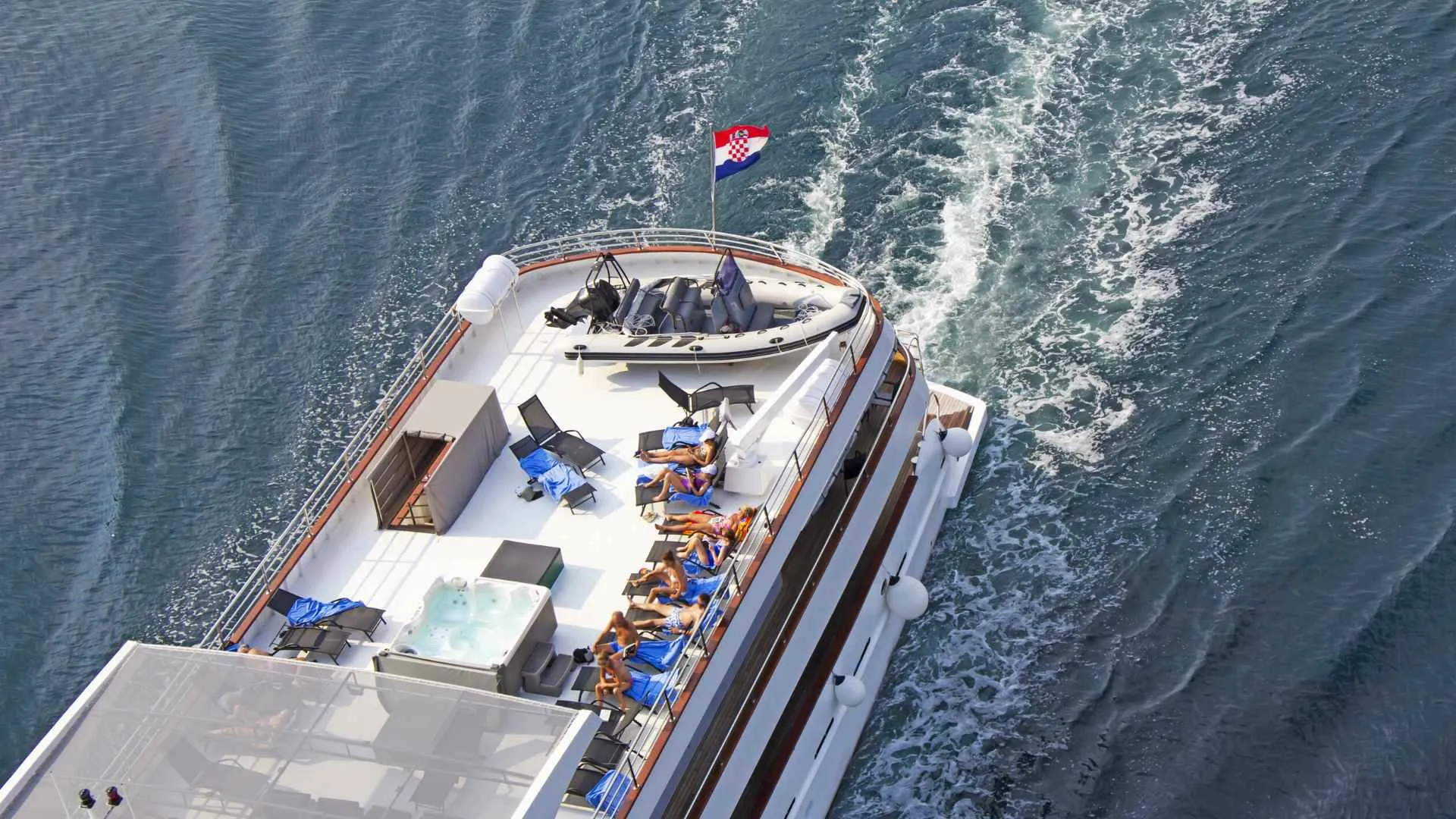
3. Air Draft (Height Above Waterline)
This is the distance from the waterline to the highest point on the ship. As ships get longer and have more decks, their height or air draft usually increases.
Why it matters:
- Bridge Clearance: Some famous bridges, like the Verrazzano-Narrows Bridge in New York, have height restrictions. Ships must be designed with these constraints in mind.
- Wind Resistance: Taller ships can be more affected by strong winds, potentially impacting stability and fuel efficiency.
4. Gross Tonnage (Volume)
While not a direct measure of size, gross tonnage is a unit of volume that gives an idea of a ship’s overall internal space. As ships grow in length, their gross tonnage typically skyrockets, accounting for the increased width and height.
Why it matters:
- Capacity: Gross tonnage gives a rough idea of how much space is available for cabins, public areas, amenities, and storage.
- Experience: A higher gross tonnage can mean more amenities, but it also might indicate a potentially crowded or impersonal experience.
Understanding the correlation between a cruise ship’s length and its other dimensions provides a comprehensive picture of its design philosophy, capabilities, and the experiences onboard.
So, the next time someone wonders, “How long is a cruise ship?”, you’ll know there’s a lot more to that question than meets the eye.

When picturing a massive cruise ship, the image is often one of grandeur, luxury, and a vast expanse of amenities. But beneath this impressive facade lies a series of environmental challenges.
The bigger the ship, the larger its footprint can be, both literally and ecologically. Let’s delve into the environmental ramifications of these maritime giants.
1. Carbon Emissions
The Concern:Bigger ships, with their powerful engines, often emit more greenhouse gases per voyage than smaller vessels. These emissions contribute to global warming and climate change.
Mitigating Measures:
- Transitioning to cleaner fuels like LNG (Liquefied Natural Gas).
- Installing exhaust gas cleaning systems to reduce harmful emissions.
- Adopting shore-to-ship power systems to reduce emissions when docked.
2. Waste Management
The Concern:A large cruise ship can generate tons of waste daily, from food scraps to sewage. If not managed properly, this waste can contaminate marine ecosystems.
Mitigating Measures:
- Implementing advanced wastewater treatment systems.
- Reducing single-use plastics and enhancing recycling efforts onboard.
- Educating passengers about minimizing waste.

3. Ballast Water
The Concern:Ships take on ballast water to maintain balance. This water can contain invasive species. When discharged in a new location, these species can harm local ecosystems.
Mitigating Measures:
- Using ballast water treatment systems to remove or neutralize harmful organisms.
- Adopting practices to minimize ballast water exchange.
4. Underwater Noise Pollution
The Concern:The noise generated by large ships can disrupt marine life, affecting communication, reproduction, and navigation for species like whales and dolphins.
Mitigating Measures:
- Designing quieter ships with advanced hull designs and noise-reducing technologies.
- Adjusting routes to avoid sensitive marine areas.

5. Anchor Damage
The Concern:Dropping anchor can destroy delicate marine habitats, such as coral reefs.
Mitigating Measures:
- Using dynamic positioning systems to hold the ship in place without anchoring.
- Charting anchor zones away from vulnerable ecosystems.
6. Fuel Spills
The Concern:Bigger ships store vast quantities of fuel. Accidental spills can devastate marine life and coastal communities.
Mitigating Measures:
- Regular maintenance and inspection of fuel tanks and pipelines.
- Implementing rigorous training and safety protocols for crew.
While the allure of massive cruise ships is undeniable, it’s crucial for both the industry and passengers to be conscious of the environmental ramifications.
Addressing these concerns not only ensures a sustainable future for cruising but also preserves the pristine beauty of the oceans for generations to come.
As passengers, making informed choices and supporting cruise lines that prioritize sustainability can make a significant difference.

Charting the Course: Future Trends in Cruise Ship Sizes
The cruise industry, much like any other, evolves in response to technological innovations, environmental concerns, and passenger preferences.
As we gaze towards the horizon, what trends can we anticipate in the sizes and designs of future cruise ships? Let’s set sail on a journey into the future of cruising.
1. Eco-Friendly Gigantism
Trend:Even as ships continue to grow in size to cater to market demand, there will be a strong emphasis on making these giants environmentally sustainable.
What to Expect:
- Advanced hybrid propulsion systems that use a combination of traditional fuels and electric or battery power.
- Solar panels and wind turbines contributing to a ship’s energy needs.
- More energy-efficient designs and smart technology integration.
2. Niche & Expedition Cruising
Trend:There’s a growing interest in unique, off-the-beaten-path destinations. This will lead to the rise of smaller, specially designed ships that can navigate harder-to-reach locales.
What to Expect:
- Ships tailored for polar expeditions, river cruises, or navigating smaller archipelagos.
- Enhanced safety features for extreme conditions.
- Onboard experts offering educational experiences about local ecosystems and cultures.

3. Adaptive Design
Trend:Future ships might be designed to adapt more flexibly to different needs and environments.
What to Expect:
- Modular designs allowing parts of the ship to be reconfigured based on the voyage.
- Advanced ballast systems that adjust the ship’s draft for accessing shallow ports without compromising stability in deeper waters.
4. Smart Ships
Trend:Integration of cutting-edge technology to enhance passenger experience and operational efficiency.
What to Expect:
- AI-driven personal assistants in cabins.
- Augmented reality tours and experiences.
- Autonomous navigation systems and predictive maintenance using AI.
5. Localized Experiences
Trend:Cruisers are increasingly looking for authentic experiences. This might lead to more mid-sized ships tailored to specific regions or experiences.
What to Expect:
- Ships designed with regional aesthetics and offering localized onboard experiences.
- Partnerships with local communities for sustainable tourism.

6. Health and Safety Innovations
Trend:Post-pandemic, there will be a heightened focus on health and safety.
What to Expect:
- Ships designed with more open spaces and better ventilation systems.
- Touchless technology and sanitation stations.
- Onboard medical facilities with advanced telemedicine capabilities.
While it’s difficult to predict the future with certainty, these trends offer a glimpse into a world where the question, “How long is a cruise ship?” might be secondary to “How smart, sustainable, or adaptable is it?” The cruise industry, buoyed by innovation and a commitment to better practices, is set to navigate a future filled with promise and exciting developments.

Anchoring Our Journey
As we dock at the end of our exploration, it’s clear that the question, “How long is a cruise ship?” extends far beyond mere measurements. From understanding the diverse sizes and their implications, to charting future trends, the world of cruising is as vast and varied as the oceans these ships traverse.
While size will always play a role in the cruise experience, the industry’s adaptability, innovation, and commitment to sustainability will steer its course forward. For avid cruisers and curious onlookers alike, the future promises waves of excitement, discovery, and more sustainable adventures on the horizon.
Frequently Asked Questions: How Long is a Cruise Ship?
1. What is the average length of a cruise ship?
Most cruise ships range between 800 to 1,200 feet in length. However, the length can vary significantly based on the ship’s design, purpose, and the cruise line it belongs to.
2. Which is the longest cruise ship in the world?
As of my last update in 2022, the title belongs to “Symphony of the Seas” by Royal Caribbean, measuring approximately 1,188 feet. However, this could change as newer and bigger ships are built.
3. Does a ship’s length determine how many passengers it can carry?
Not necessarily. While longer ships often have more cabins, the ship’s width, number of decks, and cabin configurations also play crucial roles in determining passenger capacity.
4. Are longer ships more stable in rough seas?
Generally, larger ships with wider beams can offer better stability in rough seas. However, stability also depends on the ship’s draft, hull design, and stabilization systems.
5. Can all ports accommodate the biggest cruise ships?
No. Some ports have limitations regarding ship length, draft, or air draft, restricting larger vessels. This is why certain destinations might be more accessible to smaller ships.
6. How does the length of a cruise ship correlate with its environmental impact?
Larger ships tend to consume more fuel and produce more waste, which can lead to a greater environmental impact. However, many newer, bigger ships are incorporating advanced technologies to mitigate these effects.
7. Are there regulations on how long a cruise ship can be?
While there isn’t a strict maximum length set universally, ship sizes are often restricted by the capabilities of shipyards, port facilities, and maritime safety standards.
8. Are smaller cruise ships always more luxurious than bigger ones?
Not always. While many luxury cruise lines operate smaller vessels for a more personalized experience, there are also large ships offering high-end luxury tiers or suites.
9. Do bigger ships offer more amenities and entertainment options?
Typically, yes. Larger ships often have the space to house a wider array of dining, entertainment, and recreational facilities. However, the quality and uniqueness of these amenities can vary across cruise lines.
10. How can I find out the exact length of a specific cruise ship?
Most cruise line websites provide detailed specifications of their fleet, including dimensions. Additionally, maritime databases and enthusiast websites often maintain updated lists of ship specifications.

